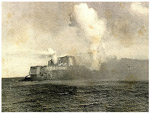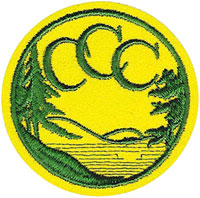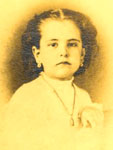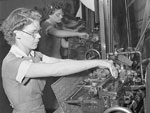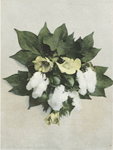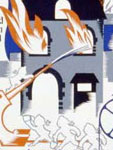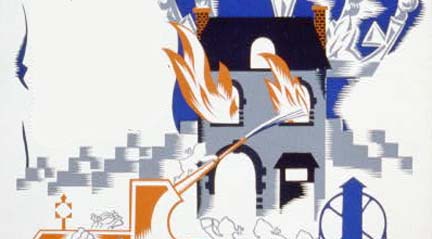Herman Melville's "Bartleby, the Scrivener"
Adapted from "Analyze A Melville Short Story" on History Matters.
- Image. "Book Stack."
- Image. "Children and the Book of Knowledge."
- Image. "National Life Insurance Company of Vermont 1942."
- Image. "Thick Dictionary."
- Illustration. "Tombs Prison, NYC Prison Yard." Frank Leslie's Illustrated Weekly, November 29, 1856.
- Illustration. "A Visit to the Tombs Prison, New York City." Frank Leslie's Illustrated Weekly, November 29, 1856.
- Print. "Herman Melville." Library of Congress, Prints and Photographs Division: LC-USZ62-135949.
- Newspaper. New York Tribune, November 8, 1853: 1. Library of Congress, Chronicling America.
- Photograph. "Tombs Prison, New York City." c. 1896. Library of Congress, Prints and Photographs Division: LC-USZ62-63343.
- Print. "Wall Street, N.Y. 1847." c. 1847. Library of Congress, Prints and Photographs Division: LC-USZC4-2461.
- Print. "Criminal Courts, in and for the City of New York." New York Public Library Digital Gallery, Image ID: 801343.
- Print. Heine, William. "The Tombs/Hall of Justice (New-York)." 1850. New York Public Library Digital Galley, Image ID:1659144.
- Print. "The Tombs." 1859. New York Public Library Digital Gallery, Image ID: 809451.
- Print. "Wall Street, N.Y." 1846. New York Public Library Digital Gallery, Image ID: 809983.
- Print. "Wall Street, N.Y." 1846. New York Public Library Digital Gallery, Image ID: 809983.
- Print. "Wall Street, N.Y." 1847. New York Public Library Digital Gallery, Image ID: 809984.
- From the National Gallery of Art:
- Painting. de Champaigne, Philippe. "Omer Talon." 1649.
- Painting. Lorrain, Claude. "The Judgement of Paris." 1645/1646.
- Painting. O'Keeffe, Georgia. "Jack-in-the-Pulpit No. IV." 1934.
- Painting. Rothko, Mark. "No. 8." 1949.
- Painting. Vermeer, Johannes. "A Lady Writing." c. 1665.
- Magazine. Melville, Herman. "Bartleby the Scrivener, A Story of Wall Street." Putnam's Monthly Magazine 2(11) (1853): 546–550.
- Magazine. Melville, Herman. "Bartleby the Scrivener, A Story of Wall Street." Putnam's Monthly Magazine 2(12) (1853): 609–616.
- Magazine. "The Counterfeit Coin." Putnam's Monthly Magazine 7(42) (1856): 576–583.
- Magazine pages. Putnam's Monthly Magazine:
- January to June, 1853: 136.
- January, 1853.
- January, 1854.
- July, 1853.
- November, 1853.
- Painting. Diebenkorn, Richard. "Ocean Park #111." 1978. Smithsonian Institution, Hirschhorn Museum.
- Book. Fowler, Francis George. The Concise Oxford Dictionary of Current English. Oxford: Clarendon Press, 1917.
- Book. Melville, Herman. Moby-Dick, or The White Whale. Boston: The St. Botolph Society, 1892.
- Photo. Rockwood, George Gardner. "Herman Melville, 1819–1891." 1885.
Is reading a piece of historic literature once enough? Not it you want to get the most out of a source. Using Herman Melville's short story "Bartleby, the Scrivener," as an example, Hans Bergmann suggests such as:
- (1) read the source several times;
- (2) read the source again after putting it aside and reading related sources;
- (3) read the source as it was originally printed (was it in a magazine? a pamphlet?); and
- (4) look up words you don't know or have questions about.
I was always interested in Melville, in college and thereafter. And then I got interested in New York City culture and started to be interested in the relationship between the—let's call it the sophisticated form of Melville's work—and cultural forms that grew up around the new New York City in the 1840s, 1850s. "Bartleby" seemed to me, and still seems to me, a strikingly interesting example of how an artist takes the cultural forms of his time and makes an interesting work of art.
I think the reason I wanted to go back to it is actually, it's the complex point, but I think it's evident on the first reading, which is. . . . I suddenly got very interested in "my heart in my mouth." In other words, "my hand in my pocket and my heart in my mouth." In other words, your hand in your pocket where the money is, and your heart is in your mouth and I started to suspect or to see that this is perhaps part of a pattern of portraying this narrator as a particular kind of sentimental narrator type. Not a bad man, but not the man who reflects the author directly. I was interested just in the stunning clarity of the end of this encounter. The isolation of both of these people.
In other words, Bartleby standing there in those empty rooms, folded up as if the book is closing. The folio—he's been behind a screen the entire time that he's been with the lawyer. And this then is folded up, leaving him "the motionless occupant of a naked room." It's a word that's used often to describe Bartleby in the story: motionless.
Anyway it seems like a culminating moment of the way the story works. It has a strange combination to me of quotidian New York life. The carts come, we move the furniture, we do all this regular stuff in the law office on Wall Street. And this obscure sense of ceremony and the suggestion that something larger is going on here. And that the word "something" is a word the lawyer often uses. Look: "I stood in the entry watching him a moment, while something from within me abraded me." Something—he'll always say—"something prompted me to think this, something prompted me." In other words, it's precisely what he is inarticulate about that makes the reader wonder what these "somethings" are.
I come from the discipline of literature. And I spend a surprising amount of time, even at this late date, reading it. That is to say, reading it, rereading it. It is always something of a trial, a mystery to me how much time it takes, even though theoretically you have the competence. But it's a matter of sitting there reading, rereading, and doing some very elemental, non-cultural analysis things, first at least. Even a supposedly highly competent reader, someone like me, who's done this a lot, repeats again and again something of the experience of the amateur. In other words, I come to a text with excitement and a certain amount of terror because I don't always get it. Or I don't understand enough of it. Or I come to understand something new this time. Sometimes the new thing overturns what I thought before.
Knowing what the words mean, knowing what the dramatic situation is, decoding anything that is obscure. Being able to say what it is. This is structuralist in the sense that a purist might say, "No, leave it," you know, "don't translate it." But I think in practical terms for me, and for students, it's very important to be able to say what it is. Which isn't as simple a matter as it sometimes seems, what the words mean. And then interpretation becomes a matter of beginning—and this again is a structuralist idea—of beginning with the oppositions, the repetitions.
What's exciting about this for me, for my own reading, and to tell to the students, is that it actually gives them something to do. In other words they say, I say, "Did you look up all the words in the dictionary?" And then they say, "Well, yes" and then I say, "Well, what does 'lintel' mean?" And they say, "I don't know." In other words they don't look up all the words in the dictionary. We don't, none of us do really. And then, they can look at oppositions, something that I think we, or most competent readers almost do automatically, without knowing it. In other words, what is the contrast, what's up, what's down. Very simple things that a student can do. What's repeated? What's the pattern? What's the image pattern, and so on.
I'm not sure that until last night when I selected this passage, that I remembered that he uses the word "folio" there. This might sound trivial to many people, but to someone like me who's thought about this a lot, right, and then I immediately lingered—this is part of the reading, interpretation, criticism business—"folio," wait a minute, I've skipped over that in my brain this whole time, these 20 years. "Folio," that means like a book! And he's folding up, the image, in other words, is not simply of folding up the screen. It's folding up the story, it's folding up the book. This is, I believe I'm saying to you honestly, brand new to me. And it comes from something that I tell my students day after day after day. Look up the words, think about what the words mean. It's the simplest of advice but it's the hardest to follow.
A teacher said to me in college—I didn't understand the poems of Wallace Stevens. Just didn't get it. I went to the teacher in his office. And he said, "Look up the words in the dictionary." And I of course was an English major and was insulted by this and I said, "I know what the words mean." And I was actually quite angry, left the office angry. Went back to my dorm room, quite privately, put the Stevens book in front of me and looked up the words in the dictionary, and it was as if the veil had been lifted from my eyes. Even the words I quote unquote "knew the meanings of," I didn't know the fullness of.
Bartleby appears to people, to students, in things like this. [holds up an anthology] This is a perfectly wonderful anthology, but it is—you know, Bartleby appears in here on page 2,330. And it appears in a thicket of perfectly wonderful things from American literature, often now including some cultural documents. But still, this is the form and most students think of literature in this form. This is one of my greatest frustrations because of course it originally appeared monthly, by Putnam's Monthly magazine, in simple paperb—it's very rare, by the way, to see them this way at all anymore because these were bound later. "Bartleby" appeared in two issues of this, November 1853 and then another one December 1853.
What I do for some undergraduate classes, and probably all graduate classes, for example, is to xerox the entire issue of the Putnam's Monthly and have them read that. This is a small step, but an important one to see what's around it. To understand that, for example, there are lots of lawyer stories written about New York. That it's a genre of popular fiction in New York during the period. There are a whole slew of lawyer's stories, some of them even published in Putnam's.
There was one after "Bartleby" in June 1856, Putnam's Monthly published a story about a New York lawyer and a mysterious scrivener, "The Counterfeit Coin" it was called. It's narrated by a genial, unaggressive lawyer. This is the beginning of that story: "Late one Saturday afternoon in a certain December, I sat by a good sea coal fire in my office, trying to muster courage enough for an encounter with the cold winds and driving storm outside." Just at that moment there is a knock on the door. The lawyer is surprised that anyone has come and he is taken aback to see a poorly-clad young woman who has trudged through the storm. She is a freelance law copyist and he engages her, and so on, and then there's a mystery, and a story. These are often related to lost heir stories, which were very popular in the period too. The notion is that somewhere in your lineage was great, great wealth. And that these mysterious characters wandering around were in fact the lost heirs.
This of course is, from the perspective of Melville, a sentimental, trivial version of the strange character on the street story. But it also illustrates the difference in how Melville handles the materials. Those stories, the ones I'm talking about, often end with the revelation. In other words, the revelation of the parent, the revelation of the source, in other words, he comes home again. The lost child comes home again or is adopted into the family, or some identity is. . . . And Melville of course leaves that completely unresolved. Even though the character of the narrator is very similar to the character of the narrator of the other pieces, that's the subtlety. Is that it looks an awful lot like, and is an awful lot like, the popular versions of itself. The narrator is very similarly handled by Melville, but the story subtly opens up the whole story of confrontation with the other classes in New York—with the other, with the new New York. And that move opens up the whole cultural text of what's going on in New York in the period.
It depends whether I set it up with a contextual system around it. In other words, if theirs a contextual system around it, I want them to be able to see the relationship to the other documents. But I want - I want all things it wants. I want - I want the ability of the English major to interpret - to reinterpret and criticize and I want inside that the ability to see the relationship to the cultural text. So I want them to be able to understand at least that occurred in a particular time and place. In another words, I want them to be able to -- reinterpret and then within the interpretation moment understand how that goes out to the ideology of the period, right - to the text to the other text of the period. So that they understand that anything that appears in front of them, as a text, is sort of torn from some place. It comes from someplace.
I'm very persuaded by the reading the text twice issue. Some of the most successful courses I've taught, including a memorable one on Moby-Dick, which was read Moby-Dick at the beginning of the course, and then read a whole slew of other stuff—Dickens, newspapers of the period—just as much as you can get in. And then read Moby-Dick at the end of the course, making them swear an oath that they're really going to read it again, even though they've read it at the beginning. And it's simply astonishing what happens at that moment.
This is based on one of the most wonderful educational experiences I ever had, which was in high school, in art history class. Where the school where I was at just hired some artist, I think off the street, to teach art history. He wasn't a regular faculty member. And he showed us slides, old master slides, for 15 minutes: "click-click-click-click-click-click." And we sat there the way we always do with old master slides—"familiar-familiar-familiar." Then he stopped. And then for the second 15 minutes he showed us 20th-century, late-20th-century paintings: abstract expressionists, bright colors, splashes of color, brightness. And we didn't understand that, but we knew something was happening there. And then—this is the genius of it—he showed us the same old masters again for the final 15 minutes. And it was just, I remember to this day, it was just an astonishing educational experience. Suddenly you saw the color in those paintings. Suddenly you saw shape in the old master paintings. Suddenly you saw, in other words—he, by the way, didn't say anything the entire time, he just showed 45 minutes of slides. And all these years later I, as you can tell, think of that moment, and try to enrich the understanding of the text.
In that case it was color and shape and form and so on. He had another very simple trick, which is he took us to a museum and made us stand in the room and close our eyes. And he said, "Okay, now think red." Still eyes closed. "Okay, now open your eyes and look around the room." Again it's just, "Shooooo!" "Close you eyes. Think blue. Look around the room. Close your eyes. Now think all colors all at once." Again, I do this every time I'm in a museum. I have no idea what his name was, by the way.
